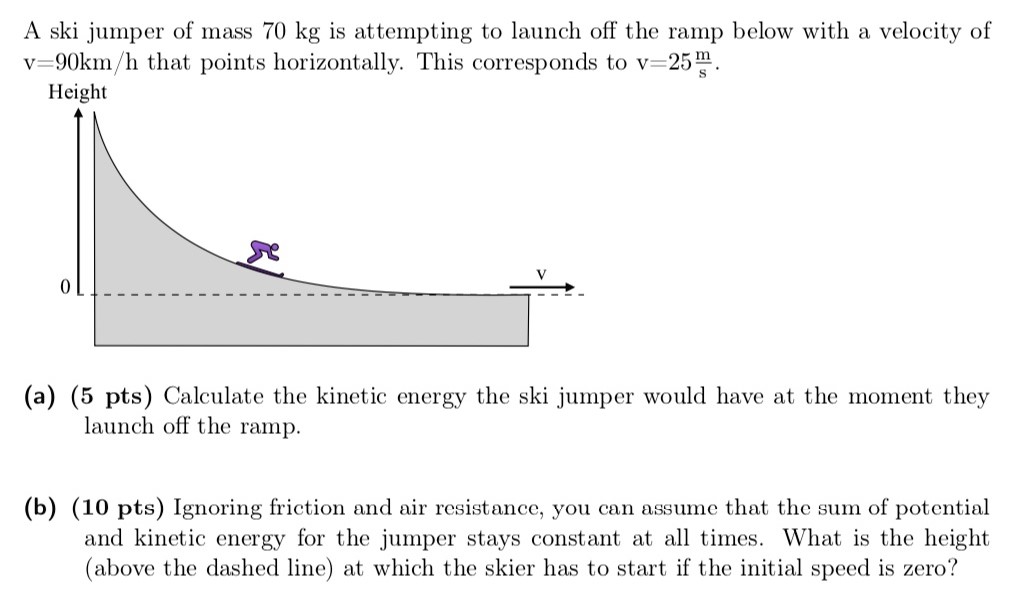A ski jumper of mass 70 kg is attempting to launch off the ramp below with a velocity of v = 90 km/h that points horizontally. This corresponds to v = 25 m/s. (a) (5 pts) Calculate the kinetic energy the ski jumper would have at the moment they launch off the ramp. (b) (10 pts) Ignoring friction and air resistance, you can assume that the sum of potential and kinetic energy for the jumper stays constant at all times. What is the height (above the dashed line) at which the skier has to start if the initial speed is zero?
